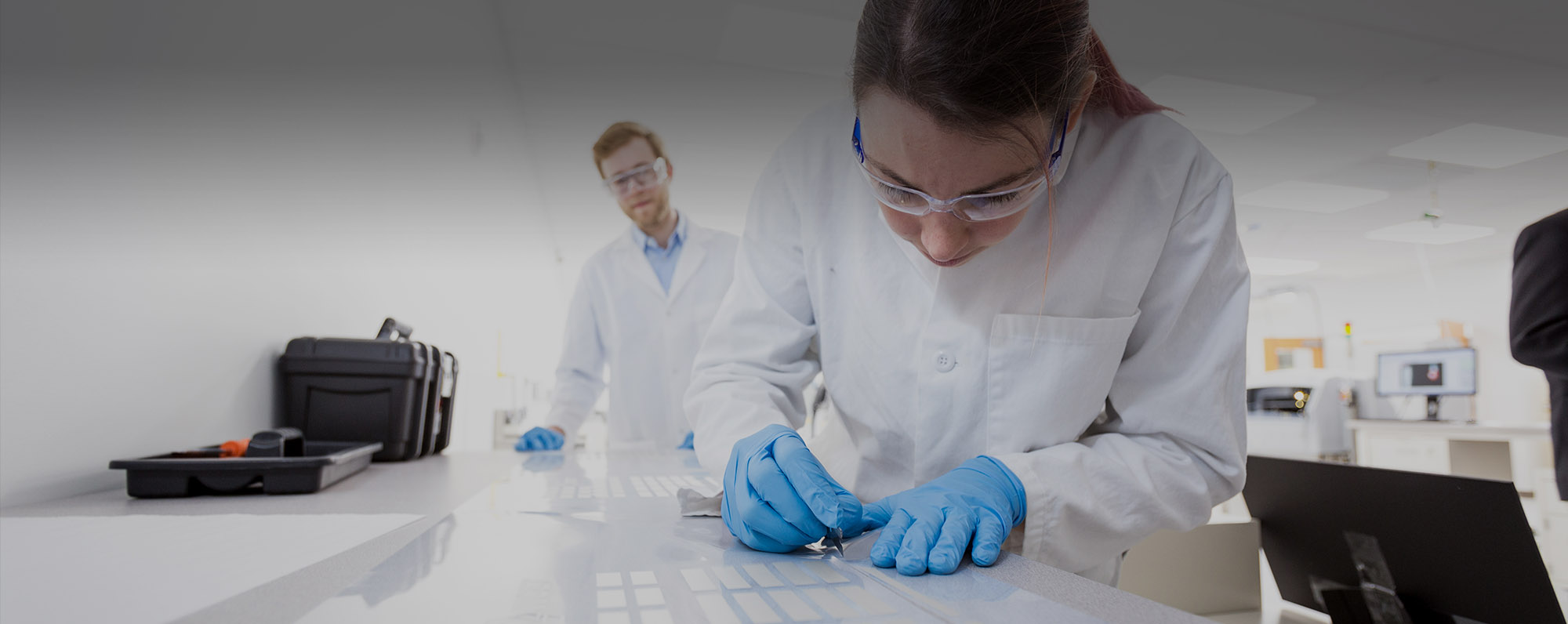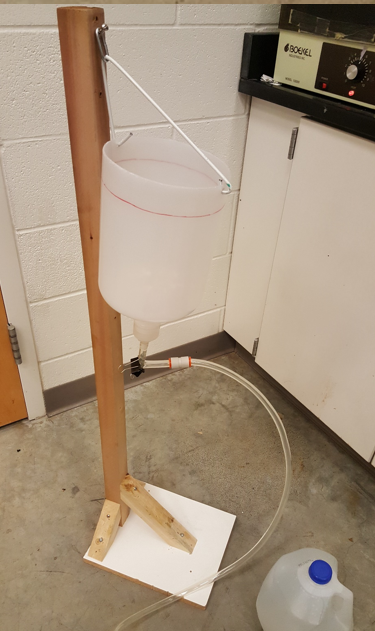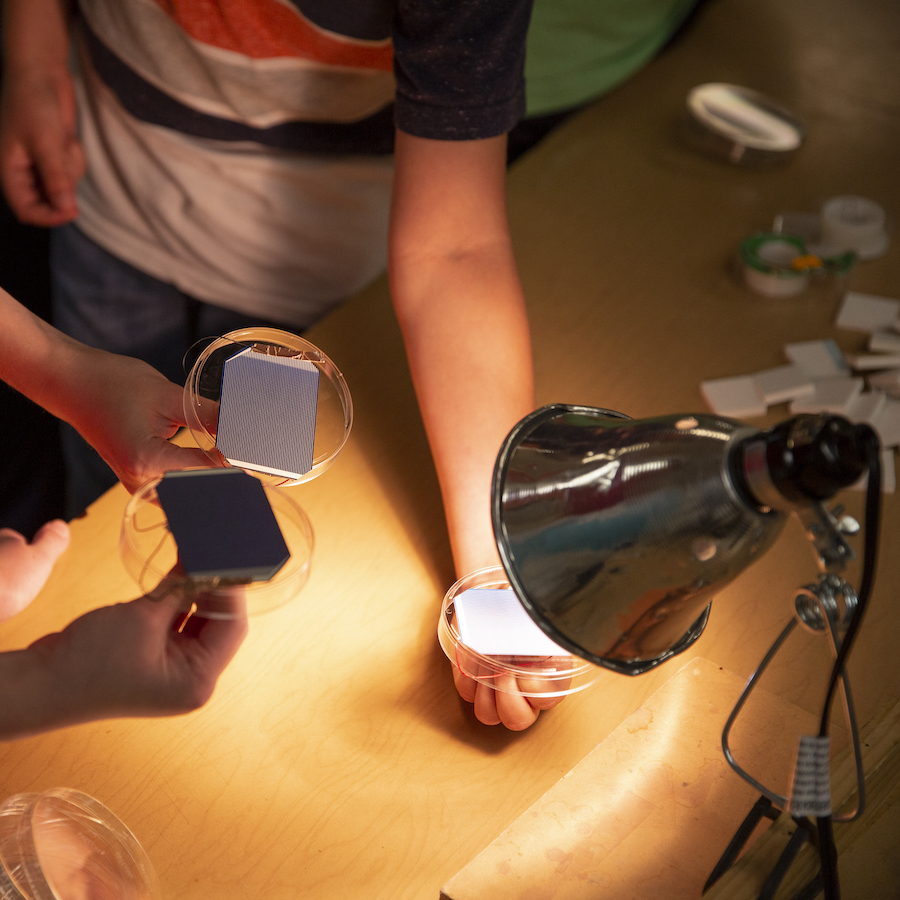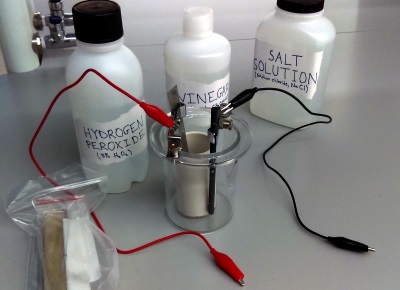Water Model of Electricity
Created by Nathan Wilson for the University of Washington Clean Energy Institute Overview: The goal of this activity is to allow students to apply their knowledge of Ohm’s law to a more intuitive and visual system: water flowing through tubes. The total time for this activity is around 30 minutes. Students are assumed to be familiar Ohm’s law (V/R=I) where V is volts, R is resistance, and I is current, as well as the formula for calculating the resistance of a resistor (R=ρl/A). where p is resistivity in ohms/meter, l is length, A is area of the conductor. Essential Question: How can we model the behavior of electricity...
Solar Spinner
[vc_row][vc_column][vc_column_text]Build a device from a solar cell, motor and petri dish. It demonstrates conversion of solar energy to electricity and then to mechanical energy.[/vc_column_text][vc_empty_space height="30px"][vc_hoverbox image="18217" primary_title="" primary_align="left" hover_title="QUESTION" shape="square" el_width="30" align="left"]How do we build a toy that uses solar energy to make it spin?[/vc_hoverbox][vc_empty_space height="40px"][mkd_accordion style="boxed_toggle" el_class="GLOWING COLORS"][mkd_accordion_tab icon_pack="" title="Background"][vc_column_text]The front of the solar cell is connected to one wire of the motor, and the back is connected to the other. This makes a complete circuit. It is very important not to let the leads that come from the top of cell to touch the tape coming from the bottom of the cell...
A Battery from Household Chemicals
Background We use batteries to power lots of different things, from TV remotes to computers. Some cars even run on batteries instead of gasoline! So where does all that power come from? All batteries, big and small, get their power from chemical reactions happening inside of them. When certain types of chemicals react, they give up electrons which we harness to produce electrical power. When you turn on a laptop computer, or press a button on a TV remote, you’re making chemistry happen! While the two ends of the battery are connected, and electricity is flowing, the chemicals can react until they’re all used up,...
- 1
- 2






